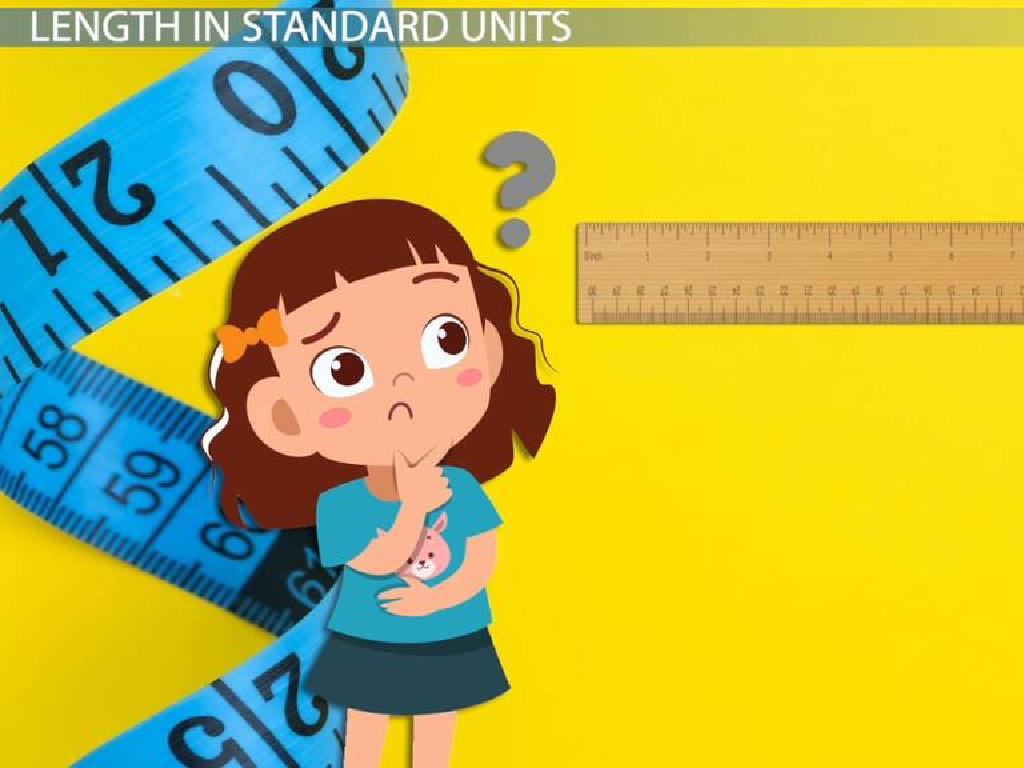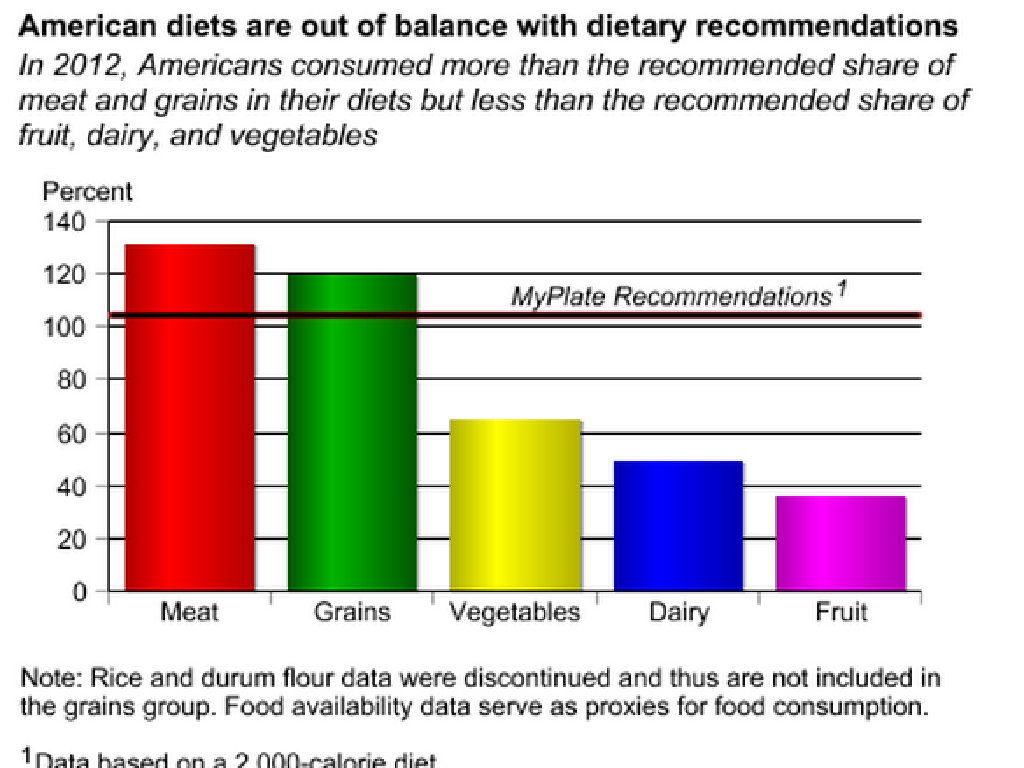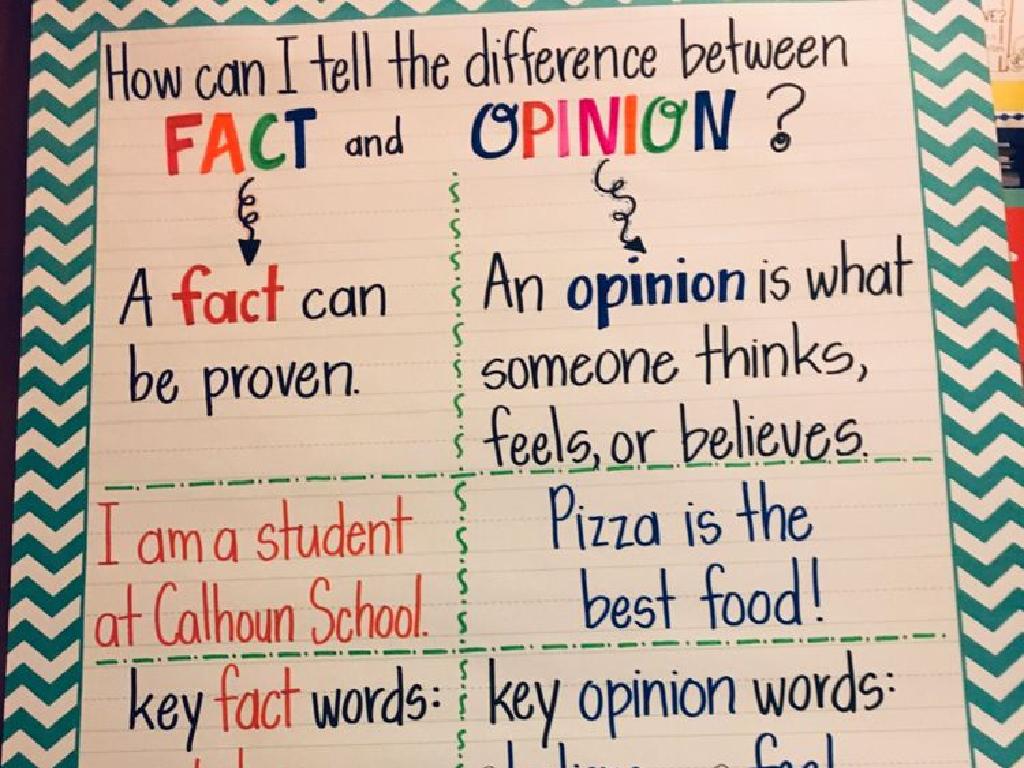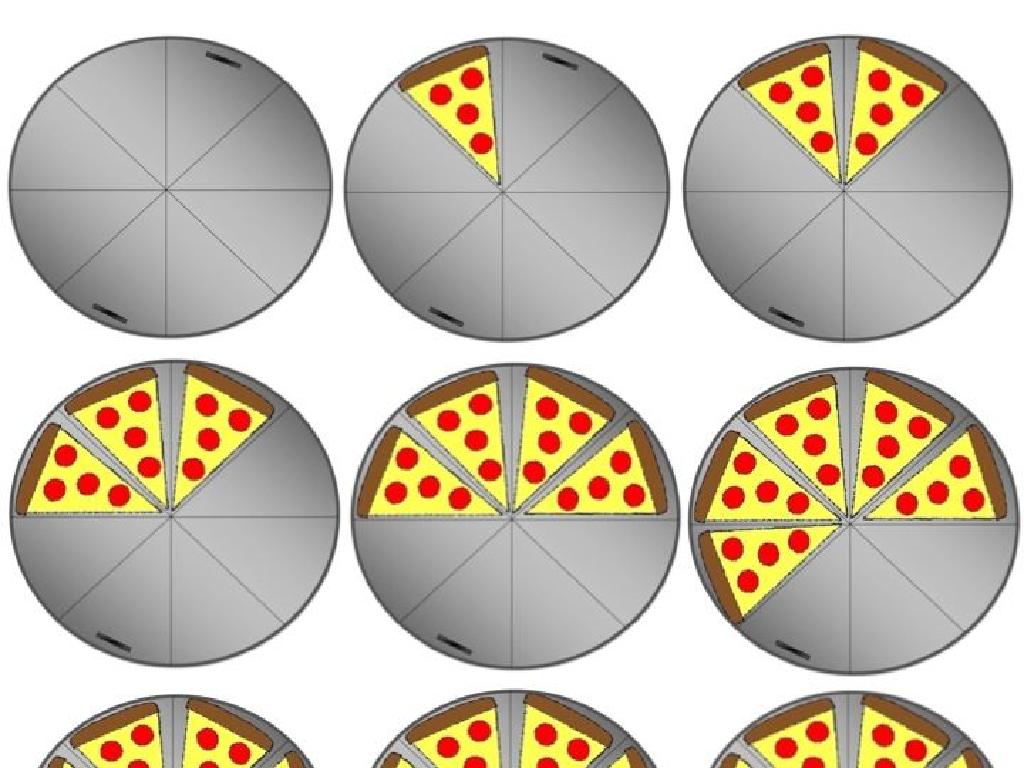Christmas
Subject: Social studies
Grade: Second grade
Topic: Cultural Celebrations
Please LOG IN to download the presentation. Access is available to registered users only.
View More Content
Exploring Cultural Celebrations: Christmas
– What are cultural celebrations?
Special times when people honor traditions or history.
– Why celebrate different cultures?
To learn from each other and enjoy our world’s diversity.
– Today’s focus: Christmas!
– Understanding Christmas traditions
Learn about Santa, decorating trees, and giving gifts.
|
This slide introduces the concept of cultural celebrations, emphasizing their importance in society. Cultural celebrations are events where people come together to honor their traditions, history, and values. They are a way to express identity and bring communities together. Discussing different cultures helps students appreciate diversity and fosters an inclusive environment. Today, we focus on Christmas, a widely celebrated holiday around the world. Explain the significance of Christmas traditions such as Santa Claus, decorating Christmas trees, and the spirit of giving. Encourage students to share their own Christmas experiences or what they know about the holiday. This will help them connect with the material personally and understand the joy of cultural celebrations.
What is Christmas?
– Christmas: A holiday on December 25th
– It marks the birth of Jesus Christ for many.
– A time for family, giving, and joy
– We share gifts, sing carols, and spend time with loved ones.
– Celebrated worldwide in various ways
– Traditions vary: Santa Claus, Christmas trees, and more!
|
Christmas is a festive holiday that is celebrated by millions of people around the world. While it has Christian origins, commemorating the birth of Jesus Christ, it has also become a cultural event that encompasses a variety of traditions and practices. Families often gather to exchange gifts, share meals, and enjoy each other’s company. Children may eagerly anticipate the arrival of Santa Claus and the decorations of Christmas trees. It’s a time characterized by a spirit of generosity and happiness. In class, discuss the different ways people celebrate Christmas globally, emphasizing respect for diverse traditions and cultures.
The Story of Christmas
– Origin of Christmas
– It’s a celebration of Jesus Christ’s birth.
– Christmas: A global holiday
– People of many faiths enjoy Christmas.
– Traditions vary worldwide
– Each country has unique customs.
– The story of Jesus’ birth
– Jesus was born in Bethlehem.
|
This slide introduces students to the story of Christmas, emphasizing its origin as a celebration of the birth of Jesus Christ, which is central to the Christian faith. Highlight that while Christmas is rooted in Christianity, it is a holiday that is celebrated by people from various backgrounds around the world. Discuss how different cultures have their own unique Christmas traditions, such as decorations, foods, and activities. Share the nativity story, focusing on the birth of Jesus in Bethlehem, and how this event is commemorated during the holiday. Encourage students to share their own family traditions or what they know about Christmas celebrations in other countries.
Christmas Traditions Around the World
– Decorating Christmas trees
– A fun way to bring families together during the holidays.
– Hanging stockings for Santa
– Children hang stockings hoping Santa will fill them with goodies.
– Singing Christmas carols
– Joyful songs that spread Christmas cheer in communities.
– Exchanging gifts with loved ones
– A way to show love and appreciation during the festive season.
|
This slide introduces students to common Christmas traditions that are celebrated around the world. Decorating Christmas trees is a cherished activity that families often do together, symbolizing life and joy in many cultures. Hanging stockings comes from the legend of St. Nicholas, where children hope to find presents in them on Christmas morning. Singing carols is a way to spread happiness and often tells the story of Christmas. Exchanging gifts is a practice that reinforces the spirit of giving and thoughtfulness among friends and family. Encourage students to share their own family traditions and understand that while these are common practices, every family might have their own unique way of celebrating.
Christmas Around the World
– Christmas in the USA and beyond
– Compare Santa Claus and decorations with other countries
– Unique global traditions
– Learn about unique customs like Sweden’s St. Lucia Day
– Children’s Christmas celebrations
– Discover how kids in different places celebrate the holiday
– Embracing diverse festivities
|
This slide aims to introduce second-grade students to the diverse ways Christmas is celebrated around the world, comparing and contrasting with their familiar traditions in the United States. Discuss how Santa Claus might have different names or looks in other countries and how decorations can vary. Introduce unique traditions such as Sweden’s St. Lucia Day or Germany’s Advent calendars. Encourage students to think about how children their age might experience Christmas in different parts of the world, from the foods they eat to the games they play. This will help students appreciate cultural diversity and understand that while celebrations may differ, the spirit of joy and giving is universal.
The Spirit of Christmas
– Christmas: A time for giving
– Giving gifts and doing kind deeds
– Helping those in need
– Donating toys or food to charities
– Cherishing moments with family
– Gathering with family to celebrate
– The joy of togetherness
|
This slide aims to instill the values of Christmas in the students, emphasizing the importance of giving, kindness, and spending time with family. Discuss the tradition of gift-giving as a way to show love and kindness. Highlight the importance of helping those less fortunate, perhaps by organizing a class charity drive. Explain that Christmas isn’t just about receiving gifts, but also about the warmth of family gatherings. Encourage students to think of ways they can spend quality time with their loved ones. Share personal stories or have students share their own family traditions to make the lesson more engaging and relatable.
Class Activity: Create Your Own Christmas Card
– Let’s make Christmas cards!
– Think of a special person
– Maybe a family member or friend?
– Use creativity to decorate
– You can draw, color, or use stickers!
– Write a heartfelt message
– Share why they’re special to you this holiday
|
This activity is designed to foster creativity and the spirit of giving during the Christmas season. Provide students with card materials such as construction paper, markers, crayons, stickers, and glitter. Encourage them to think of someone who has been kind or important to them this year. Guide them through the process of decorating their cards and help them write a message if they need assistance. Possible variations of the activity could include making cards for local nursing home residents, community helpers, or family members. This is also a great opportunity to discuss the tradition of sending Christmas cards and how it helps to spread joy and show appreciation during the holiday season.
Reflecting on Christmas and Cultural Celebrations
– Recap of Christmas learning
– Think of other cultural festivities
– Like Diwali, Hanukkah, or Eid
– Importance of cultural respect
– Understanding others brings us together
– Sharing our cultural experiences
|
As we conclude today’s lesson, we’ll reflect on what we’ve learned about Christmas, such as its traditions, history, and the way people celebrate it around the world. Encourage students to think of other cultural celebrations they know or have participated in, like Diwali, Hanukkah, or Eid. Discuss why it’s important to respect and learn about different cultures, emphasizing that this understanding can foster kindness and unity among people. Allow students to share their own experiences with cultural celebrations, whether they’ve experienced them personally or learned about them from friends or family. This sharing will help students appreciate the diversity in their classroom and community.






